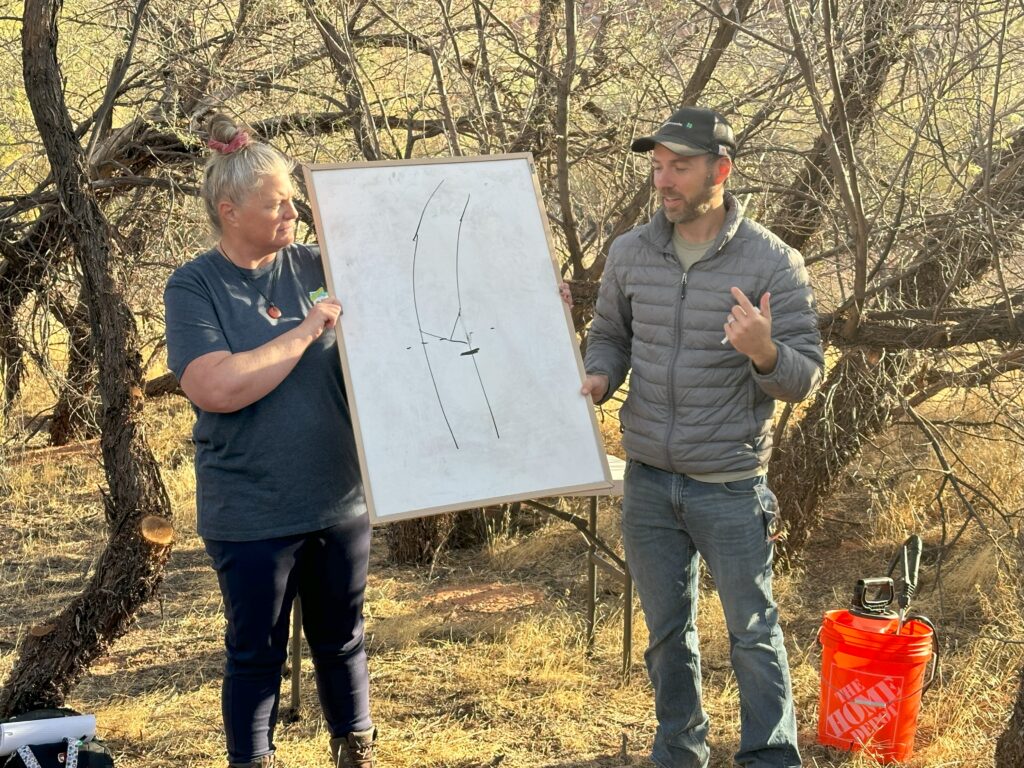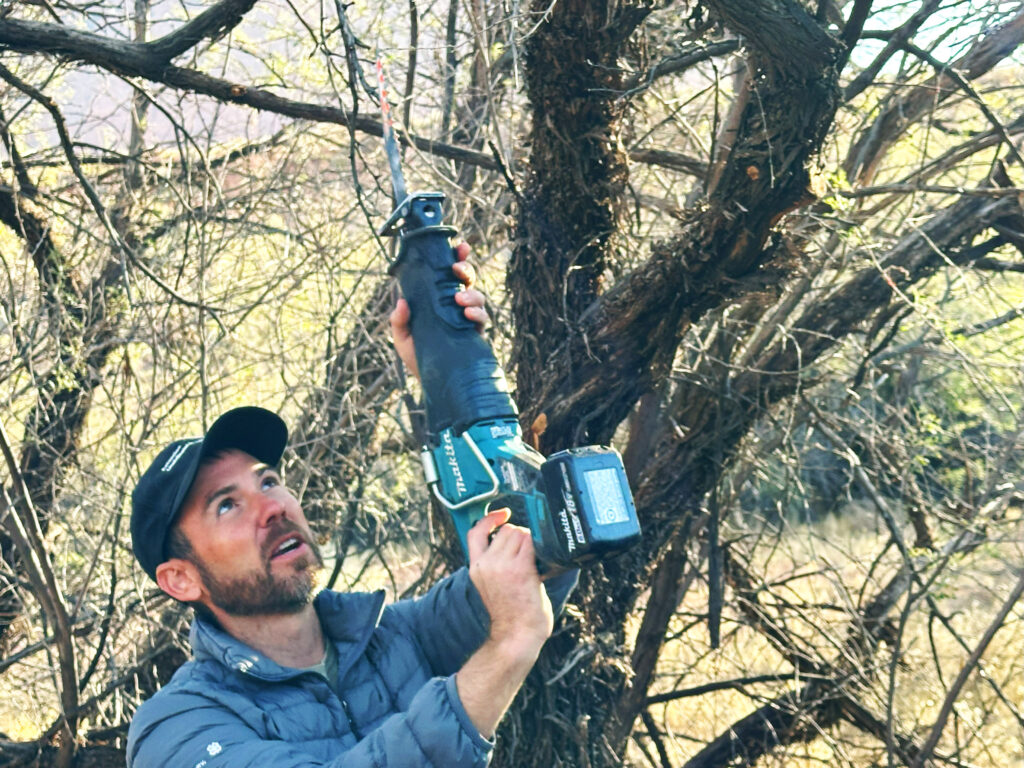

A Learning Organization Increases its Value Over Time
December 2024
Education is fundamental to the success of virtually all non-profits. Members and volunteers routinely ask, “Why do we do what we do? Why is it important? How does it make a difference?” And for a learning organization, a key question is how can we improve what we do?
Such questions were the driving force behind this year’s annual safety workshop recently organized by the Desert Preservation Initiative. Invited workshop leaders, Benjamin Scow, a professor in the Agriculture and Natural Resources Extension at Utah State University, and Amy Davidson, a Pesticide Compliance Specialist in the state Division of Agriculture & Food, offered instruction on the safe removal of invasive species in the Santa Clara watershed.
Attendees learned about proper safety gear, such as wearing steel-toed shoes and protective eyewear, as well as how to cut limbs and apply herbicide for the greatest effect. DPI member Ken White provided attendees with a safety guidelines handout developed based on field experiences and consultation with area professionals. As DPI volunteer Wayne Pennington, an engineer and geophysicist, notes, “bringing in professionals not associated with our group provides both instruction and independent evaluation of DPI’s methods.” DPI board member Sara Dupre adds, “DPI’s knowledge and competence were evident and acknowledged by the trainers.”
“The DPI core group has an amazing understanding of their work, especially Pathfinder II,” says Amy Davidson. She was particularly impressed by Ken White’s safety data sheet. In fact, Davidson’s response was that organizations like DPI and government agencies can learn from each other. “Since my session with DPI, I have started asking questions within my organization about why we don’t cover Safety Data Sheets or require them on service vehicles and at chemical storage locations,” Davidson writes. “There’s so much information we inspectors are missing.”
Such workshops provide learning organizations the opportunity to continually improve their practices, making them streamlined, efficient and safer. “They offer an opportunity to interact with professionals in the field, to ask questions, to assess the DPI process and to refine what we do so as to be better in line with safety protocols,” says Warren. “Volunteer work with DPI is the door to a critically important service to the Santa Clara watershed which has long been neglected, that is, restoring washes which have been overtaken by tamarisk and Russian olive, allowing native plants to return and greatly reducing the risk of wildfire, while building community.”
”Removal of invasive species is important,” says Pennington, “particularly when the species is detrimental to the environment. Rather than clutching our pearls and lamenting that the government doesn’t step in and remove them, citizen groups can take the initiative. Having demonstrated that success is possible and that citizens are indeed engaged, government support can become available,” he says, “expanding our reach. Besides, the hard work and camaraderie are rewarding in their own right.”
“At the workshop, I witnessed the positive energy of our community,” says Warren, “an energy which is making a difference one project at a time, now counting some 3000 hours of field labor.”